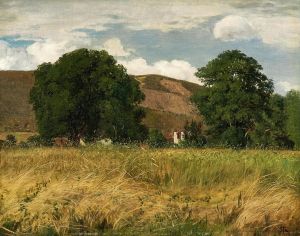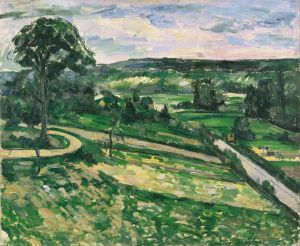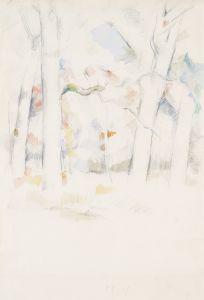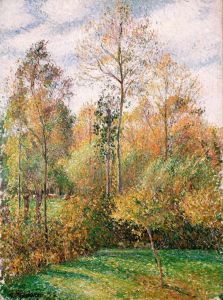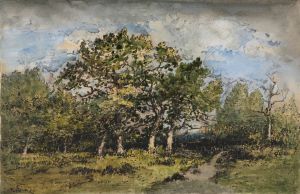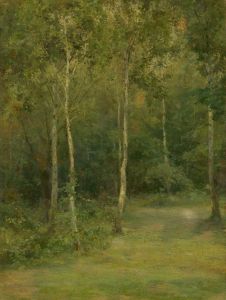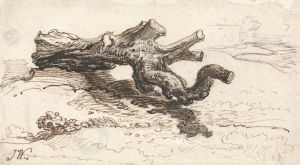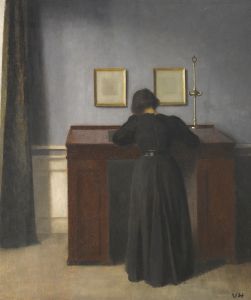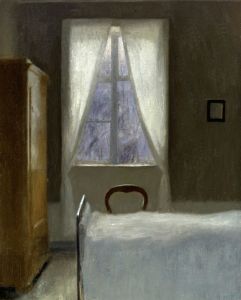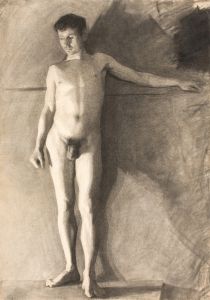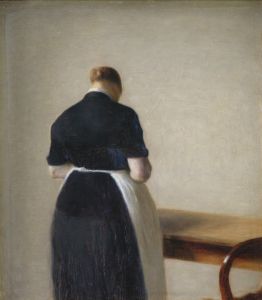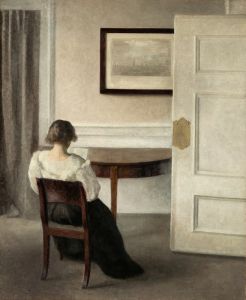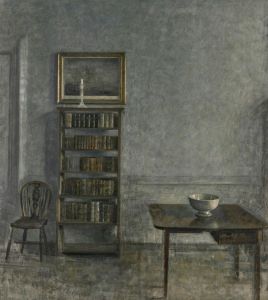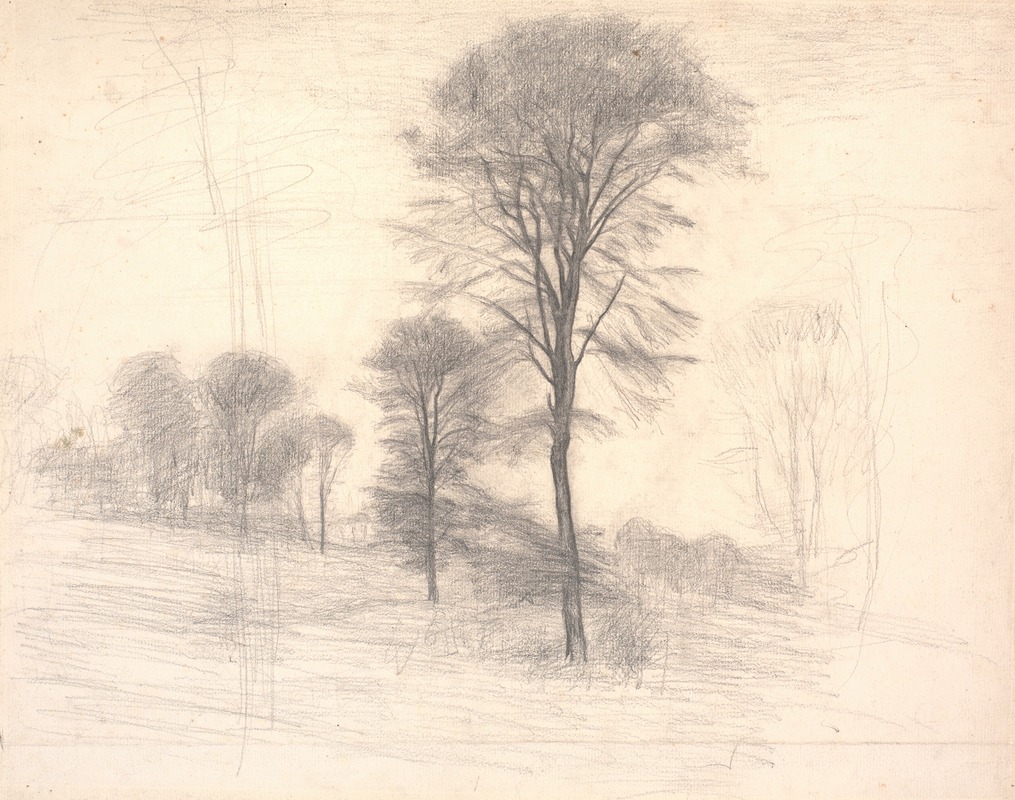
Landskab med spredte træer. ‘Ryet’ ved Farum Sø
A hand-painted replica of Vilhelm Hammershøi’s masterpiece Landskab med spredte træer. ‘Ryet’ ved Farum Sø, meticulously crafted by professional artists to capture the true essence of the original. Each piece is created with museum-quality canvas and rare mineral pigments, carefully painted by experienced artists with delicate brushstrokes and rich, layered colors to perfectly recreate the texture of the original artwork. Unlike machine-printed reproductions, this hand-painted version brings the painting to life, infused with the artist’s emotions and skill in every stroke. Whether for personal collection or home decoration, it instantly elevates the artistic atmosphere of any space.
Vilhelm Hammershøi (1864–1916) was a Danish painter known for his poetic and subdued works, often characterized by muted color palettes and a focus on light and atmosphere. While he is most famous for his interior scenes and portraits, Hammershøi also created a number of landscapes, including Landskab med spredte træer. ‘Ryet’ ved Farum Sø (translated as Landscape with Scattered Trees. 'Ryet' by Farum Lake).
This painting depicts a serene and understated view of the Danish countryside near Farum Lake (Farum Sø), located in northern Zealand, Denmark. The title suggests that the specific area portrayed is "Ryet," a location near the lake. The composition features scattered trees across an open landscape, rendered in Hammershøi's characteristic restrained style. The muted tones and soft brushwork evoke a quiet, contemplative mood, emphasizing the stillness and simplicity of the natural scene.
Hammershøi's landscapes often reflect his interest in capturing the essence of a place rather than its exact details. In this work, he avoids dramatic contrasts or vibrant colors, instead focusing on subtle gradations of light and shadow. This approach aligns with his broader artistic philosophy, which prioritized atmosphere and emotion over narrative or overt symbolism.
The painting is believed to have been created during a period when Hammershøi occasionally ventured into the countryside to paint en plein air, though he often completed his works in the studio. Like his interiors, his landscapes are marked by a sense of quiet introspection, inviting viewers to pause and reflect on the beauty of the ordinary.
As of now, specific details about the exact year of creation, the painting's current location, or its provenance are not widely documented. However, it remains an example of Hammershøi's ability to imbue even the simplest scenes with a profound sense of stillness and timelessness.





